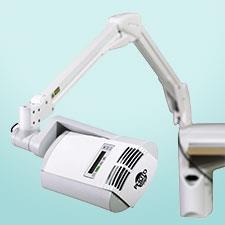
Non-Surgical Skin Cancer Treatment

Some low risk skin cancers are suitable for non-surgical treatment, including certain prescription creams, and photodynamic therapy. By avoiding surgery for appropriate lesions, one can avoid some of the potential complications of surgery (e.g. prolonged discomfort, bleeding, and infection). Scars can also be minimised.
Non-surgical treatment has a good cure rate for appropriately selected low-risk skin cancers. However, they are generally not appropriate for more dangerous skin cancers (such as melanoma and squamous cell carcinoma), and higher risk basal cell carcinoma.
Your dermatologist can help guide as to whether non-surgical treatment is appropriate for you and your lesion, and help guide to the most appropriate choice.
Non-surgical treatments include
Photodynamic therapy (PDT).
PDT is a fast, safe, and effective treatment for low risk skin cancers. The treatment is administered in the clinic, so there is little active intervention required from you.
PDT utilises photosensitising medication, oxygen and light, to create a photochemical reaction that selectively destroys cancer cells, and minimises injury to normal skin cells.
Imiquimod (Aldara)
This self-applied cream is suitable for superficial basal cell carcinoma and intraepidermal carcinoma. It is most commonly applied 5x per week for 6 weeks.
5-Fluorouracil (Efudix)
This self-applied cream can be used for intraepidermal carcinoma, and rarely for some basal cell carcinoma. It is applied once or twice daily for 3-6 weeks.
Cryotherapy
Liquid nitrogen spray (-196 0C) can be suitable for low risk skin cancers, such as superficial basal cell carcinoma and intraepidermal carcinoma. It is very cost effective, and fast. However, to be effective for these low risk skin cancers, treatment needs to be much more aggressive than for sun spots (which are commonly ‘frozen’ with cryotherapy). When used to treat skin cancers, it results in a large blister which takes weeks to heal, and leaves permanent hypopigmentation (white spots).
Radiotherapy
Radiotherapy is a unique non-surgical treatment for skin cancer. It may be used after surgery (adjuvant treatment) for certain high-grade skin cancers. It can be used as primary treatment, usually where surgery is not possible, or is declined (e.g. due to other medical problems). The long-term appearance may be suboptimal, and it is usually reserved for elderly patients when used as primary treatment.
